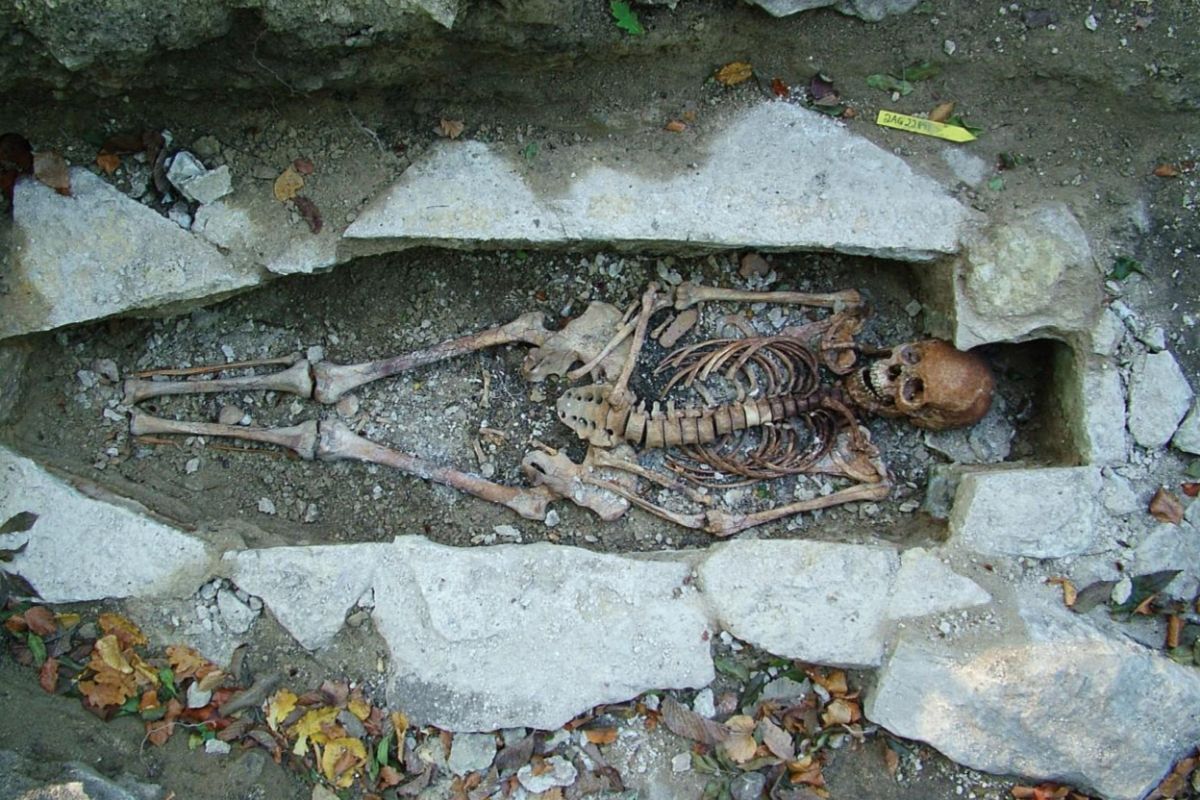Study: the first genetic contact between Europe and America
Investigation: Vikings, victims of climate change
More than a thousand years ago, the square sails of Viking ships first appeared on the horizon of European coasts.
Over the centuries that followed, they looted cities, conquered territories, and traded with distant regions on various continents - from the Asian steppes to North America.
Although in reality the so-called Viking era does not occupy a long period - from the first attacks around the year 800 AD until the beginning of the 12th century - these warriors
survive in the collective imagination thanks to television, literature and video games.
Now, a new study that
analyzes the DNA found in more than 400 skeletons,
forces to rethink many of the topics about them.
One of the conclusions of the research, which is published this Wednesday in the journal
Nature
, is that
the concept of Viking was not really limited to people with genetic inheritance from Scandinavian peoples.
For example, several famous burials in Scotland attributed to invaders are actually local individuals who assumed Viking identities and who were buried as such.
"We have the image of the Vikings as a people well connected to each other, mixing, trading and making inroads to fight kings across Europe, because that's what we see on television and read in books," explains Eske Willerslev, researcher at the University of Cambridge, director of the Center for Geogenetics at the University of Copenhagen and co-author of the study.
"But in this study we showed that it was not that kind of society. Furthermore, the results suggest that
the 'Viking' identity was not limited to people of Scandinavian genetic ancestry."
Apart from the help of local populations,
the attacks and looting appear to have been an activity carried out as a family.
Genetic information from a ship that served as a burial in Estonia reveals that four brothers lie there who died on the same day.
"And the rest of the ship's occupants were genetically similar, suggesting that they probably all came from a small town somewhere in Sweden," says Ashot Margaryan, professor of evolutionary genomics at the University of Copenhagen and first author of the paper.
"In addition, we see differences between different Viking populations within Scandinavia, which shows that the groups in that region were much more isolated than previously believed," Willerslev clarifies.
Pirates of the north
The authors recall that
the word Viking actually comes from the term
Vikingr
, which means pirate
.
Although in contemporary culture it has become a synonym for the ancient Scandinavians, in the Middle Ages the term defined an activity.
And like later pirate groups (for example, the early modern pirates of the Caribbean), Viking crews frequently lost members and recruited new troops on their voyages, combining dissident elements from different backgrounds and cultures.
Recreation of the appearance of Vikings of southern European origin Jim Lyngvild
The researchers thus emphasize that
people genetically related to the Pictish tribes of Scotland became Vikings without actually mixing with the Scandinavians
.
Also, in Great Britain and Ireland written sources of the time are conserved that exhort the local inhabitants not to join the Viking invaders.
Brown hair
On the other hand, the results of the research project, which has lasted six years, reflect that many Vikings actually had brown hair and not blonde hair and that the genetic history of Scandinavia was marked by the presence of foreign genes from Asia and southern Asia. Europe, even before that call, was Viking.
"This study changes the perception of who a Viking really was, because no one imagined that these significant genetic flows from southern Europe and Asia to Scandinavia had occurred before that era," says Willerslev.
New image
The vision that has been had of these warriors is marked by the artistic representations of the 19th century.
The costume designer for the first production of
The Ring of the Nibelung
, Carl Emil Doepler, was the first to envision horned helmets, creating a cliché that has endured in popular culture.
Nor does it appear that there was a single Viking identity
: the populations of Denmark, Norway and Sweden each have different genetic signatures.
A woman named Kata found in a Viking burial in Varnhem (Sweden) Museum in Västergötlands
The study suggests that the inhabitants of what is now Norway traveled to Ireland, Scotland, Iceland and Greenland, those from Sweden went to the Baltic countries and the Danes traveled to England.
In fact, starting in the 9th century, and for much of the Viking era, almost half of the English territory was under the Danelaw: the rule of the Danes.
The authors recall that the genetic legacy of this time is still present today in 6% of the DNA of the United Kingdom population, compared to 10% in Sweden, for example.
"Our results change the perception of who a Viking really was.
The history books will have to be updated,"
Willeslev concludes.
According to the criteria of The Trust Project
Know more
Science and Health
science
See links of interest
News
Coronavirus
Translator
Programming
Horoscope
Films
Topics
17th stage of the Tour de France, live: Grenoble - Méribel Col de la Loze
Live, Rafa Nadal - Pablo Carreño

